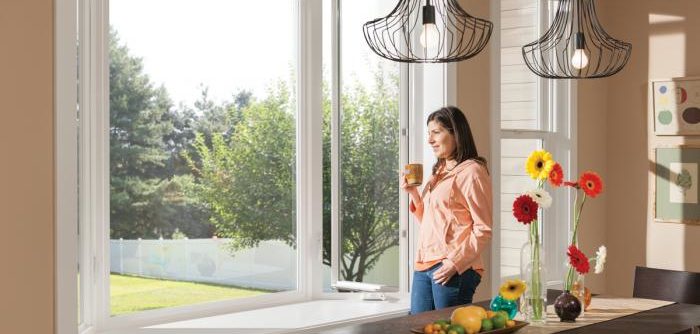Impacting everything from our fitness levels to our mental health, the ways that buildings can positively or negatively influence our overall well-being are being increasingly investigated. In light of this expanding body of research, architects have established the need to safeguard the health of the residents of the buildings that they develop as a fundamental design principle.
One of the “make or break” features of contemporary home designs – in relation to wellness – is the plentiful provision of natural light. This guide to embracing natural light within the homespace will look at the harmful effects of light deprivation, as well as the physical and psychological benefits of getting enough sunlight. The switchable, triple glazing of right now is not necessarily just for windows. It could be involved in creating anything from glass roof systems to entire walls: a feel good, look great and totally integral component of your home improvement design.
Artificial lighting: not the brightest idea for our wellbeing
Since the popularisation of electrical lighting towards the end of the 19th century, humans have become ever more reliant on it to illuminate our living and working spaces. This is an evolutionarily unprecedented switch. Previously, throughout recorded history, we relied on the sun as our primary – or indeed only – light source, meaning that our sleeping and waking rhythms were synced with its rising and setting.
At odds with the natural order of things, the reality of contemporary living is that most people spend a staggering 90 percent of their time in indoor environments. Artificial lighting is often kept on well into – or even throughout – the night. The inevitability of resultant health problems increases the further we diverge from our natural sleep/wake cycle, and the more time we spend under the deceptively helpful glare of our attractively designed domestic lighting system.
Health problems that a chronic lack of exposure to sunlight can produce include vitamin D deficiency; this can prevent the body absorbing calcium from food, leading to weak bones and disrupted sleep patterns, and makes us vulnerable to becoming more prone to mental health conditions such as depression. Likewise, over-exposure to artificial light can increase the risk of developing conditions including type two diabetes, high blood pressure, and certain types of cancer. The more we can factor our need for natural light into the design of our homes, the brighter our future will look.
The age of re-enlightenment: re-embracing natural light
In terms of realising the importance of working opportunities to access more sunlight into our buildings, we’re currently having a lightbulb moment. Designs like the Photon Space – a micro-home made entirely out of glass – are emblems of the extent to which it is possible to engineer design solutions designed to re-enchant us with the benefits of natural light. Developed by the architectural glazing firm Cantifix in collaboration with a team of scientists and anthropologists from Oxford University, the Photon Space has a high performance, ultra-violet radiation protective glass skin which is suitable for most climates, and through which residents can access all the benefits of realigning their body-clocks with the turning of the world.
This process is exponentially better for us than a reliance on artificial light. Despite our current, indoor-orientated mode of existence, our bodies remain biologically programmed to function optimally when they are regulated by the stimulus of the sun. The changes associated with the dawning of the day and the falling of the night prompt the production of different hormones within the body, which helps us sleep and wake up.
This internal mechanism is called our Circadian clock. When it is allowed to operate in step with natural shifts between darkness and daylight, this gives rise to a host of physiological and psychological benefits. These include deeper and more efficient sleep, improved focus and productivity, more rapid cognitive responses, boosted mood. Increased exposure to sunlight also allows for greater vitamin D production and consequently stronger bones, and boosts the body’s immune system, leading to better overall health.
Home improvement: a window of opportunity
If you are building or redesigning your home, it is worth treating this process as a golden opportunity to explore ways of increasing its levels of natural light. This could involve creative measures like installing skylights, replacing internal walls with widows or external walls with outdoor glass wall panels, and even beaming light into dark places with the aid of solar tubes or tunnels.
This type of home adaptation has long-term payoffs. In addition to saving energy which would have been channelled into lighting the property – thereby significantly reducing your home’s impact on the environment – you will access the priceless, myriad health benefits of natural light.
Words: Rosalind Stone from Cantifix: architectural glazing with a difference.
Tags: Benefits Of Natural Light, Windows For Wellbeing